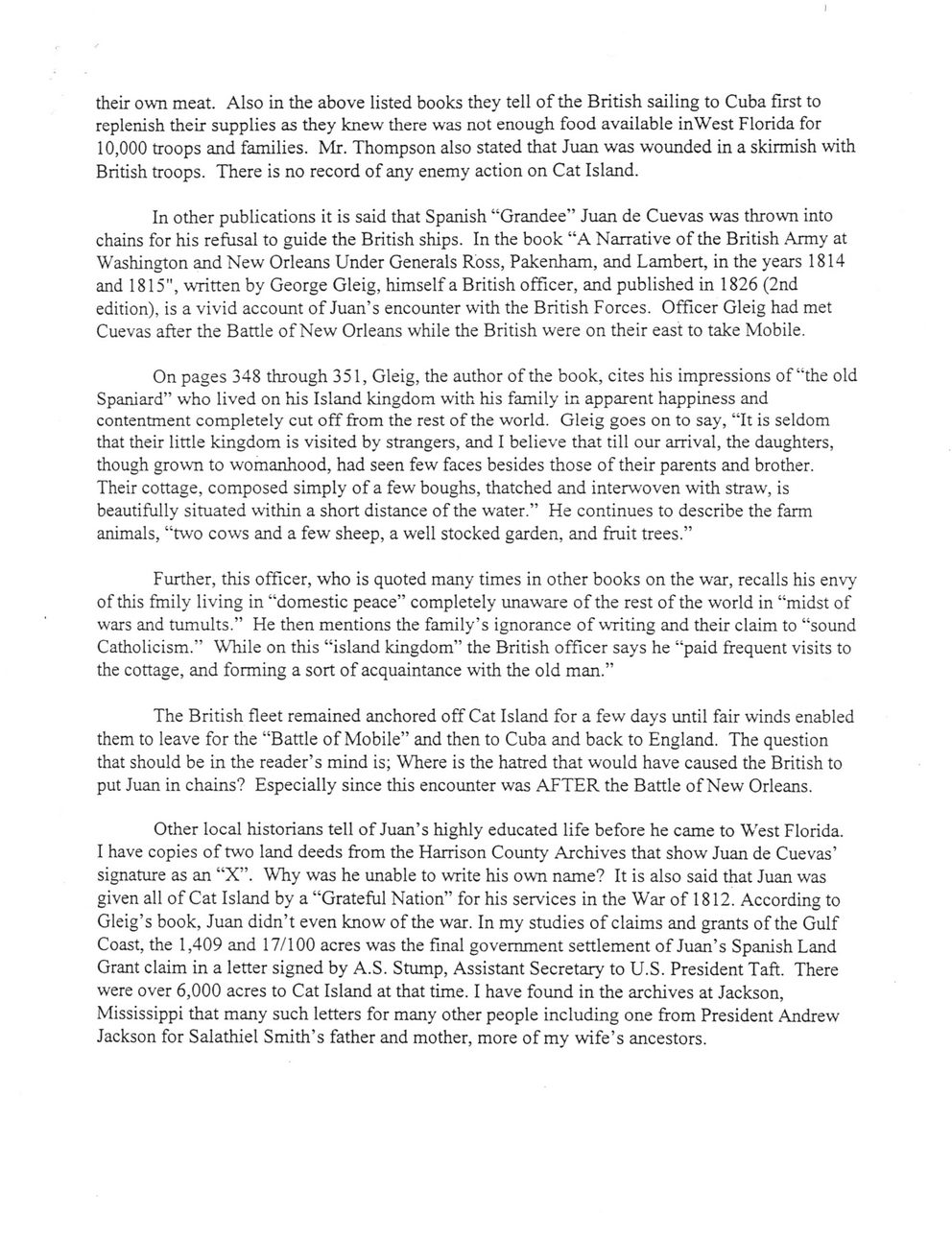This text was obtained via automated optical character recognition.
It has not been edited and may therefore contain several errors.
I their own meat. Also in the above listed books they tell of the British sailing to Cuba first to replenish their supplies as they knew there was not enough food available inWest Florida for 10,000 troops and families. Mr. Thompson also stated that Juan was wounded in a skirmish with British troops. There is no record of any enemy action on Cat Island. In other publications it is said that Spanish ?Grandee? Juan de Cuevas was thrown into chains for his refusal to guide the British ships. In the book ?A Narrative of the British Army at Washington and New Orleans Under Generals Ross, Pakenham, and Lambert, in the years 1814 and 1815", written by George Gleig, himself a British officer, and published in 1826 (2nd edition), is a vivid account of Juan?s encounter with the British Forces. Officer Gleig had met Cuevas after the Battle of New Orleans while the British were on their east to take Mobile. On pages 348 through 351, Gleig, the author of the book, cites his impressions of ?the old Spaniard? who lived on his Island kingdom with his family in apparent happiness and contentment completely cut off from the rest of the world. Gleig goes on to say, ?It is seldom that their little kingdom is visited by strangers, and I believe that till our arrival, the daughters, though grown to womanhood, had seen few faces besides those of their parents and brother. Their cottage, composed simply of a few boughs, thatched and interwoven with straw, is beautifully situated within a short distance of the water.? He continues to describe the farm animals, ?two cows and a few sheep, a well stocked garden, and fruit trees.? Further, this officer, who is quoted many times in other books on the war, recalls his envy of this fmily living in ?domestic peace? completely unaware of the rest of the world in ?midst of wars and tumults.? He then mentions the family?s ignorance of writing and their claim to ?sound Catholicism.? While on this ?island kingdom? the British officer says he ?paid frequent visits to the cottage, and forming a sort of acquaintance with the old man.? The British fleet remained anchored off Cat Island for a few days until fair winds enabled them to leave for the ?Battle of Mobile? and then to Cuba and back to England. The question that should be in the reader?s mind is; Where is the hatred that would have caused the British to put Juan in chains? Especially since this encounter was AFTER the Battle of New Orleans. Other local historians tell of Juan?s highly educated life before he came to Wrest Florida. I have copies of two land deeds from the Harrison County Archives that show Juan de Cuevas? signature as an ?X?. Why was he unable to write his own name? It is also said that Juan was given all of Cat Island by a ?Grateful Nation? for his services in the War of 1812. According to Gleig?s book, Juan didn?t even know of the war. In my studies of claims and grants of the Gulf Coast, the 1,409 and 17/100 acres was the final government settlement of Juan?s Spanish Land Grant claim in a letter signed by A.S. Stump, Assistant Secretary to U.S. President Taft. There were over 6,000 acres to Cat Island at that time. I have found in the archives at Jackson, Mississippi that many such letters for many other people including one from President Andrew Jackson for Salathiel Smith?s father and mother, more of my wife?s ancestors.

Cuevas 051